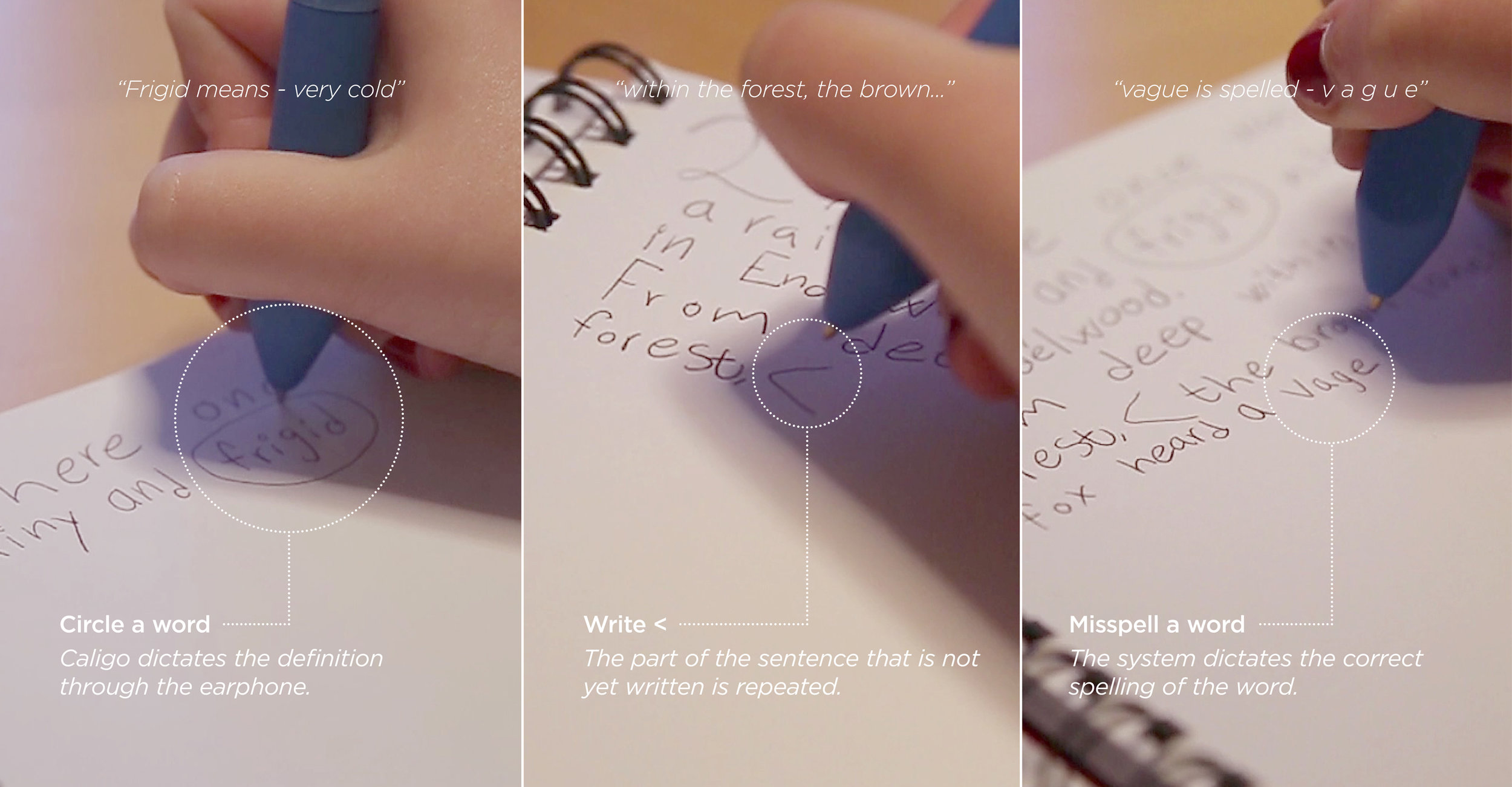Caligo was the result of a two week collaborative project between the Interaction Design and Advanced Product Design MFA programs at Umeå Institute of Design.
Role on Team
During this project I placed a focus creating a concept that drew inspiration from tangible and faceless interaction. By using the practice of writing as the navigation method, the concept also utilizes embodied cognition. I played a strong role in organizing and developing the text to speech Wizard of Oz prototype.
Reflection
During the project my personal goal was to focus on storytelling and prototyping experiences. It was also amazing to be able to work as a part of a team that was able to create a high quality model and concept video. During the project our mission was to utilize technology to highlight rather than hide the analog practice of handwriting.
Concept Overview
Caligo is a pen that encourages students to practice the skill of handwriting through interactive storytelling. With the help of an earbud, the student is dictated a story that they write down. The pen recognizes what has been written and progresses through the story as it is written. The student is notified when words are misspelled and they have the opportunity to have a line repeated or a word defined. The pen encourages the student to learn by doing and provides opportunities for the student to co-write the story through choose-your-ending story construction.
Navigating through writing based interface.
Caligo functions like any other pen that students will encounter throughout their schooling. There is no need for a supporting digital aid needed as the student navigates through the stories through what they write. In order to have Caligo repeat the last three words of the stories the student writes <. In order to have a word defined the circle circles it.
Process Highlight: Wizard of Oz Prototyping
One of the main skills developed further during this project was the use of Wizard of Oz testing. In oder to gain a better understanding of how users interacted with and perceived having a co writing experience. We used a bluetooth headset, text to speech, and a script to mimic what a functioning product experience would be like. By having a rough approximation that was still believable we were able to better understand how the interaction flow should work.
One of the first challenges that presented itself to us when developing the co-writing experience was the pace of dictation. How much of the story is given to the student at a time? How fast should the dictation be? Using a combination of a script and text to speech we were able to test various iterations of sentence length. We tested full sentences, logical breaks in the story, and every three words. Through the test we found that short logical breaks in the story worked the best as it balanced digestible chunks of dictation with enough storytelling to become immersed in it. After this initial iteration of testing amongst ourselves we had additional questions about the written controls, the sounds used, and the overall experience of co-writing
For the second iteration of testing we utilized Wizard of Oz prototyping to simulate the overall experience. By adding a bluetooth headphone to the script and text to speech we were able to simulate the experience of co-writing with a broader audience of users. During this testing we were also able to test how written controls functioned within the co-writing experience. We initially had < to repeat the last three words and underlining a word for a definition but through the testing process we learned that often times people cross out wrong words and that would potentially lead to confused controls. We shifted to circling words for definitions as a result of these tests.
Another challenge that arose from our Wizard of Oz testing was that the student needed more guidance through the storytelling process. This led us to develop a series of sound icons to indicate various controls and actions. It was important that these sound icons were informative but were nurturing and encouraging. The sound icons have recognizable associations combined with sounds associated with writing and books. The combination of these sounds results in an experience where the predominant emotion of is calm. Practicing handwriting can be a frustrating task for a student so the goal is to engage them in an immersive story experience while calmly guiding them through the challenges they face. This decision was also influenced by feedback from our second round of testing.





